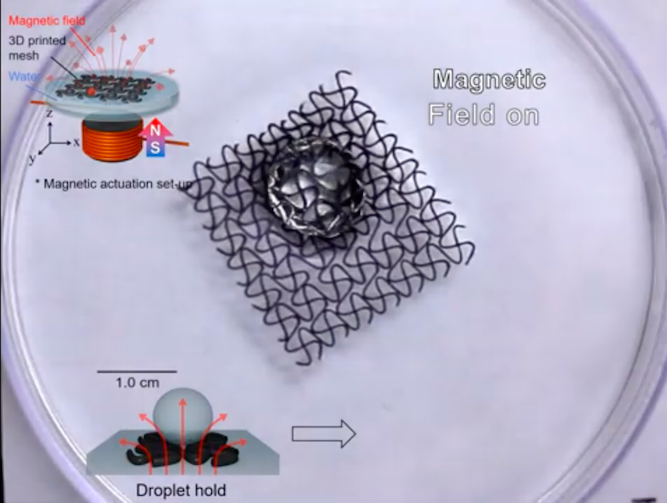Structures created by researchers from North Carolina State University can float on water and be controlled with applied magnetic fields. They are 3D printed as flexible mesh structures which can grab objects, carry water droplets and expand and contract.
“This research shows capabilities in the emerging field of combining 3D printing and soft robotics,” said Orlin Velev, S. Frank and Doris Culberson Distinguished Professor of Chemical and Biomolecular Engineering at NC State. Veley is also a corresponding author of a paper describing the research.
In order to create the structures, the researchers first began by making a 3D printable ink. This ink is made from silicone microbeads, bound by liquid silicone and contained in water. Interestingly, it resembles toothpaste.
The researchers then 3D printed this toothpaste-style ink or “homocomposite thixotropic paste” into mesh-like shapes. Next, they cured the structures in an oven. The result is ultra-soft, flexible silicone structures that can be controlled by magnetic field application.
“Embedding of iron carbonyl particles, which are widely available and have a high magnetization, allows us to impart a strong response to magnetic field gradients,” added Joseph Tracy, professor of materials science and engineering and a senior co-investigator on the project.
What Can 3D Printed Mesh Structures be Used For?
In a news release on the university’s website, the researchers explain that the mesh structures have the potential to be useful as soft robotics which mimic creatures living on water surfaces, such as water striders.
However, another use may be to mimic live tissues in the body or for creating tissue scaffolds for cell cultures.
The researchers published their work in Advanced Materials Technologies. In this paper, they showed how the structures could be designed to be reconfigurable meshes which could grab a ball of aluminum foil.
“The structures are also auxetic, which means that they can expand and contract in all directions,” Velev said. “With 3D printing, we can control the shape before and after the application of the magnetic field… For now, this is an early stage proof-of-concept for a soft robotic actuator.”

License: The text of "NCSU Researchers Control 3D Printed Mesh Structures with Magnetic Fields" by All3DP is licensed under a Creative Commons Attribution 4.0 International License.